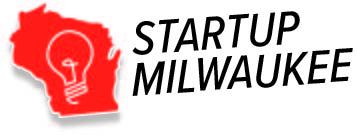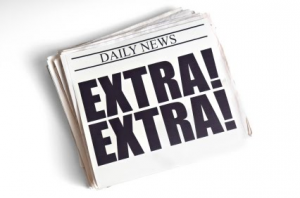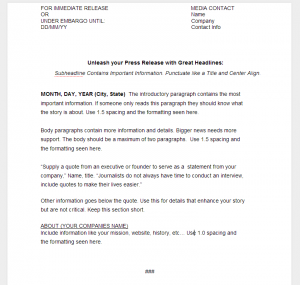Create Your Winning Press Kit
So you want to see your name in lights. Media coverage is one of the best and least expensive ways to let the world know about you and your company (or rock band for that matter). The trouble with media coverage is that you can’t buy it or send a regular email to get it. With a couple of simple tools you can create a press kit that will help you attract the attention of local media outlets. (This is part 3 of a 3 part series. If haven’t already, start with Part 1: The Media List and Part 2: The Press Release.)
The press kit provides additional support for your media campaign. Typically you send a press kit to follow up if a journalist is interested in your story. Every press kit is a bit different. However, there are a number of standard documents you should include. You can be creative with the press kit and include more than what is listed here.
FAQ: People are likely to have additional questions about you and your product. Provide answers to those questions here. Include relevant details that were not critical to your press release.
Bios: Provide background information about your core team in this document. This is similar to a resume--however, it is written out. Start with most recent items and work your way backwards. This should be fairly straight forward.
Fact Sheet: The fact sheet is a bulleted list of all the important information contained in your press release and press kit. Think of this as an outline of your press release and press kit.
Company Background: Write about your company's background and history. You can talk about previous accomplishments and important events.
Picture: Include a picture of you or your product. Make sure it is relevant to the story.
Now that you have a great media list, a compelling press release and an awesome press kit, it's time to find your business some exposure. Send your press release to the people listed on your media list, then follow up with your press kit when reporters and journalists contact you!
About the Author: Steve Anderson is an entrepreneur who lives in Milwaukee, Wisconsin. Currently he is the COO of LessonLogs and the Founder of Laylines Consulting. He has helped numerous companies obtain seed stage funding and is a previous winner of Startup Weekend Madison. In addition, Steve has a Masters Degree from the Wisconsin School of Business. Find him on Twitter: @LaylinesSteve
How to Write a Killer Press Release
So you want to see your name in lights. Media coverage is one of the best and least expensive ways to let the world know about you and your company (or rock band, for that matter). The trouble with media coverage is that you can’t buy it or send a regular email to get it. With a couple of simple tools, you can create a press kit that will help you attract the attention of local media outlets. This is part 2 of a 3 part series. (If haven’t already, start with Part 1: The Media List.)
The keyword in news is new. It's easy to communicate your news to local media with the standard format of a press release. This format makes it easy for them to digest your information. A well written press release can make or break your media campaign.
The 11 Critical Parts of a Press Release:
1. Media contact: The contact person at your company for questions or interviews.
2. Release date: Most press releases are either: “FOR IMMEDIATE RELEASE,” or “UNDER EMBARGO UNTIL: Day, month, year.” (Under embargo means that the media should not publish the news until the embargo expires.)
3. Headline: The headline should catch the reader’s attention and contain the main topic of the post. A good headline goes a long way. Here’s five easy tricks to writing catchy headlines.
4. Sub-headline: This is a note or summary that contains other important information. Punctuate like a title and center align.
5. Dateline: "MONTH, DAY, YEAR (City, State)." The dateline is almost always bold and listed in that order.
6. Introductory paragraph: Write the most important information and any important details. If someone reads this paragraph and this paragraph only, they should know what the story is about.
7. Body paragraphs: These paragraphs contain more information and details. The body should be about two paragraphs maximum.
8. Quote: Supply a quote from an executive or founder. This can be used as a statement from your company in lieu of an interview.
9. Other information: This is for other details that are not critical to the story. Keep this section short.
10. "ABOUT [YOUR COMPANIES NAME]" Include information like your corporate mission, website, history, etc. This should be single spaced.
11. After the article, include three hash marks (###) to mark the end of the press release. (See example below.)
Stayed tuned for Part 3: The Press Kit
Part 1: 5 Easy Steps to Unlock Media Coverage
Part 3: The Press Kit
About the Author: Steve Anderson is an entrepreneur who lives in Milwaukee, Wisconsin. Currently he is the COO of LessonLogs and the Founder of Laylines Consulting. He has helped numerous companies obtain seed stage funding and is a previous winner of Startup Weekend Madison. In addition, Steve has a Masters degree from the Wisconsin School of Business. Find him on Twitter: @LaylinesSteve
Five Easy Steps to Unlock Media Coverage
 So you want to see your name in lights. Media coverage is one of the best and least expensive ways to let the world know about you and your company (or rock band, for that matter). The trouble with media coverage is that you can’t buy it or send a regular email to get it. With a couple of simple tools, you can create a press kit that viagra shop usa will help you attract the attention of local media outlets.
So you want to see your name in lights. Media coverage is one of the best and least expensive ways to let the world know about you and your company (or rock band, for that matter). The trouble with media coverage is that you can’t buy it or send a regular email to get it. With a couple of simple tools, you can create a press kit that viagra shop usa will help you attract the attention of local media outlets.
This is the first part of a three part series. Let’s get started!
The first part of your press kit is your media list. The media list is a collection of names and email addresses for local reporters and journalists. Pick reporters and journalists who are likely to cover you and your business. The best way to get ignored is to send a press release about a new product to a reporter who covers music and arts (don’t be this person). If you don’t have a good media list even the world's best press release will fall flat. This is the leg work that will make your media campaign successful.
Here are five easy ways to make a targeted media list:
1) Define your audience. Who are you trying to reach? Who are your customers?
2) Identify the publications that your audience reads.
3) Look at each of these publications and get to know the type of content they publish.
4) Find the journalist who has previously covered topics similar to yours.
5) Find that journalist’s contact information and add it to your media contact list.
Follow these five easy steps to find a handful of reporters and you will be well on your way to a successful media campaign!
Part 3: Create Your Winning Press Kit
About the Author:
Steve Anderson is an entrepreneur who lives in Milwaukee, Wisconsin. Currently he is the COO of LessonLogs and the Founder of Laylines Consulting. He has helped numerous companies obtain seed stage funding and is a previous winner of Startup Weekend Madison. In addition, Steve has a Masters Degree from the Wisconsin School of Business. Find him on Twitter: @LaylinesSteve.




